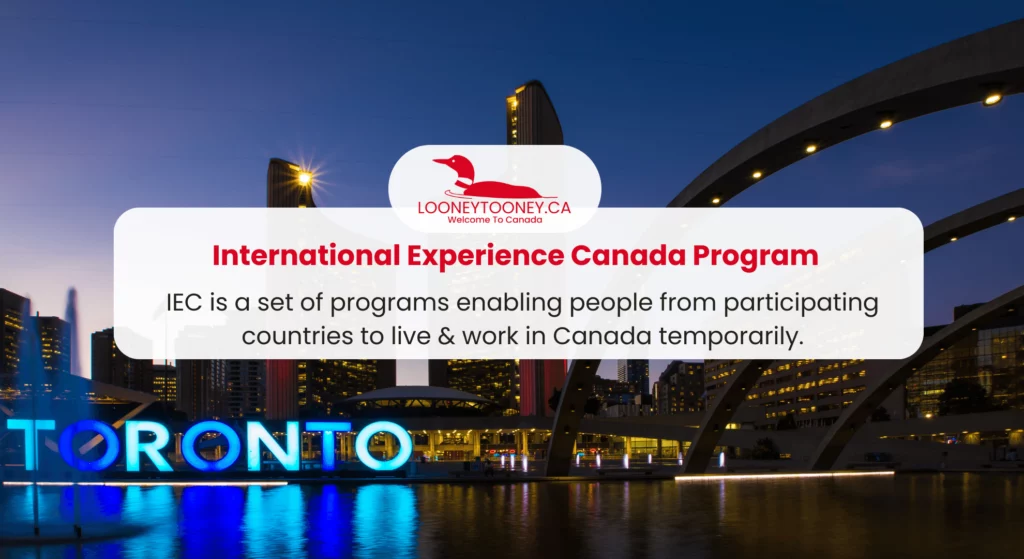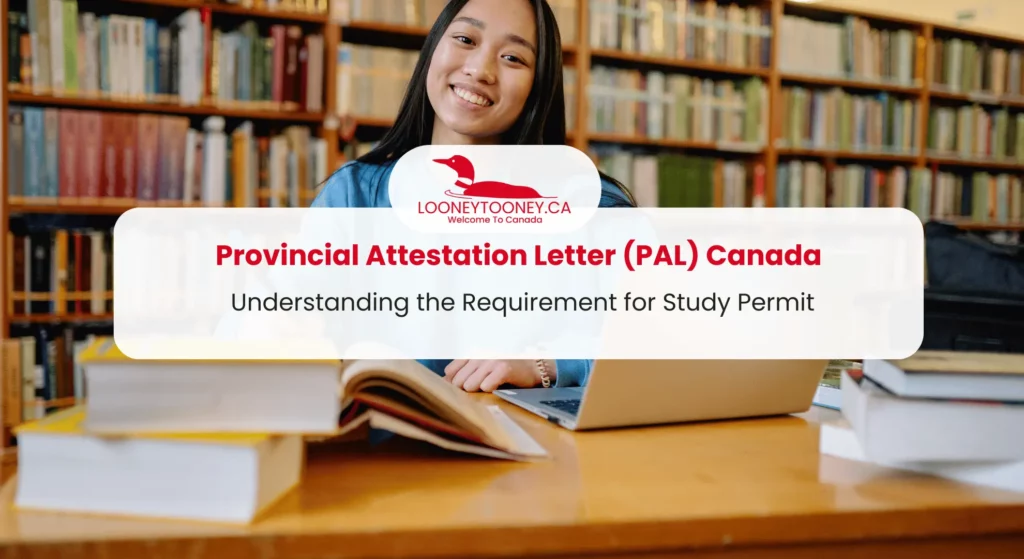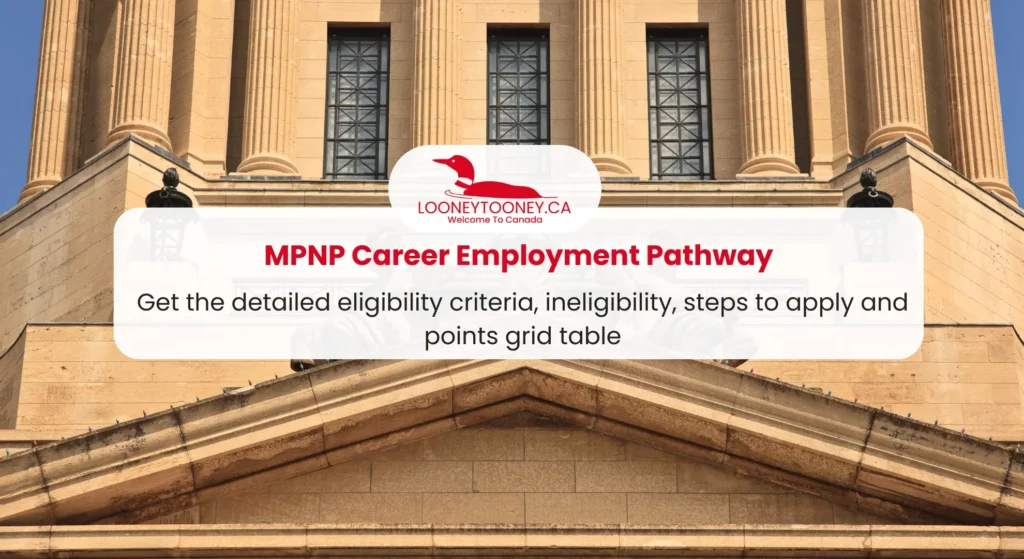Canada’s International Experience Canada (IEC) encompasses a range of initiatives that empower young individuals from eligible nations to temporarily live and work in Canada. Those who achieve success through an IEC program can seek a Canadian work permit without undergoing a Labour Market Impact Assessment (LMIA). IEC grants provisional residence in Canada, allowing approved work permits for a duration of up to one year.
Table of Contents
- Why Choose International Experience Canada (IEC)?
- International Experience Canada: Eligibility
- International Experience Canada: Categories
- How do the International Experience Canada categories work?
- Step-by-Step Guide for Applying to International Experience Canada
- Required Documentation for International Experience Canada
- International Experience Canada Aftersteps
- International Experience Canada- FAQs
Why Choose International Experience Canada (IEC)?
International Experience Canada work permits are granted through a random draw system, meaning that not all individuals expressing interest will be selected for the program. The likelihood of success is contingent upon the program and country-specific quotas. The IEC encompasses three distinct programs. Although there are general requirements for IEC participation, applicants are advised to confirm the specific requirements for each individual program.
– Live and work in Canada for a duration of 2 years
– Over 90,000 applications accepted for the year 2023
– Receive your visa within a swift 6-week timeframe
– Eligible for applying for Canada Permanent Residency (PR)
– Unlock the opportunity to travel and work in Canada
International Experience Canada, commonly known as IEC, opens avenues for youth to explore travel and work opportunities in Canada. Eligible candidates are entered into the IEC pool.
International Experience Canada: Eligibility
Eligibility for International Experience Canada application varies based on your nationality, and there are two distinct pathways:
1. Countries with an International Experience Canada Agreement:
Your country of citizenship must have an agreement with the Canadian government, allowing you to apply for an IEC work permit.
| Country | Working Holiday | Young Professionals | International Co-op | Age Limit |
| Andorra | Up to 12 months | N/A | N/A | 18-30 |
| Australia | Up to 24 months | Up to 24 months | Up to 12 months (unless it is the applicant’s second participation since 2015, in which case, 12 months) | 18-35 |
| Austria | Up to 12 months | Up to 12 months | Up to 6 months (internship or work placement must be in forestry, agriculture, or tourism) | 18-35 |
| Belgium | Up to 12 months | N/A | N/A | 18-30 |
| Chile | Up to 12 months | Up to 12 months | Up to 12 months | 18-35 |
| Costa Rica | Up to 12 months | Up to 12 months | Up to 12 months | 18-35 |
| Croatia | Up to 12 months | Up to 12 months | Up to 12 months | 18-35 |
| Czech Republic | Up to 12 months | Up to 12 months | Up to 12 months | 18-35 |
| Denmark | Up to 12 months | N/A | N/A | 18-35 |
| Estonia | Up to 12 months | Up to 12 months | Up to 12 months | 18-35 |
| France | Up to 24 months | Up to 24 months | Up to 12 months | 18-35 |
| Germany | Up to 12 months | Up to 12 months | Up to 12 months | 18-35 |
| Greece | Up to 12 months | Up to 12 months | Up to 12 months | 18-35 |
| Hong Kong | Up to 12 months | N/A | N/A | 18-30 |
| Ireland | Up to 24 months | Up to 24 months | Up to 12 months | 18-35 |
| Italy | Up to 12 months | Up to 12 months | Up to 12 months | 18-35 |
| Japan | Up to 12 months | N/A | N/A | 18-30 |
| Latvia | Up to 12 months | Up to 12 months | Up to 12 months | 18-35 |
| Lithuania | Up to 12 months | Up to 12 months | Up to 12 months | 18-35 |
| Luxembourg | Up to 12 months | Up to 12 months | Up to 12 months | 18-30 |
| Mexico | Up to 12 months | Up to 12 months | Up to 12 months | 18-29 |
| Netherlands | Up to 12 months | Up to 12 months | N/A | 18-30 |
| New Zealand | Up to 23 months | N/A | N/A | 18-35 |
| Norway | Up to 12 months | Up to 12 months | Up to 12 months | 18-35 |
| Poland | Up to 12 months | Up to 12 months | Up to 12 months | 18-35 |
| Portugal | Up to 24 months | Up to 24 months | Up to 24 months | 18-35 |
| San Marino | Up to 12 months | N/A | N/A | 18-35 |
| Slovakia | Up to 12 months | Up to 12 months | Up to 12 months | 18-35 |
| Slovenia | Up to 12 months | Up to 12 months | Up to 12 months | 18-35 |
| South Korea | Up to 12 months | N/A | N/A | 18-30 |
| Spain | Up to 12 months | Up to 12 months | Up to 12 months | 18-35 |
| Sweden | Up to 12 months | Up to 12 months | Up to 12 months | 18-30 |
| Switzerland | N/A | Up to 18 months | Up to 12 months | 18-35 |
| Taiwan | Up to 12 months | Up to 12 months | Up to 12 months | 18-35 |
| Ukraine | Up to 12 months | Up to 12 months | Up to 12 months | 18-35 |
| United Kingdom | Up to 24 months | N/A | N/A | 18-30 |
2. International Experience Canada through a Recognized Organization (RO)
If your country is not included in the list of eligible nations for the IEC, you have the option to engage with a Recognized Organization. Individuals from an IEC-designated country or territory are not obliged to utilize an RO.
For those not hailing from an IEC-designated country or territory, the only route to Canada through the IEC involves partnering with a Recognized Organization. ROs, encompassing youth service organizations that provide work and travel support, may operate as for-profit, non-profit, or educational entities. The majority of IEC Recognized Organizations typically impose a service fee for their assistance.
List of Recognized Organizations (ROs)
1. AIESEC Canada
2. GO International
3. International Association for the Exchange of Students for Technical Experience (IAESTE)
4. A-Way to Work/International Rural Exchange Canada Inc.
5. Memorial University of Newfoundland (MUN)
6. Stepwest
7. SWAP Working Holidays
International Experience Canada: Categories
The International Experience Canada (IEC) offers three distinct categories of travel and work opportunities. An individual may qualify for more than one category. It’s important to note that candidates must first receive an Invitation to Apply (ITA) before they can submit their application to the IEC.
Working Holiday Visa
The Working Holiday visa is tailored for individuals seeking the flexibility to work for any employer while exploring Canada. Successful applicants in this program receive an open work permit, unattached to specific employers. This flexibility allows individuals to switch employers and locations freely while residing in Canada. This involves an open work permit for Canada, allowing you to finance your vacation through temporary work in the country.
The Working Holiday program is particularly attractive to foreign nationals from participating countries who:
– Lack of a job offer from a Canadian employer.
– Desire the freedom to work for multiple employers.
– Seek the flexibility to reside in various locations.
– Wish to earn income while traveling.
Due to its relatively lenient requirements, the Working Holiday program is highly popular. Canada allocates predetermined quotas for applicants based on their country of origin. Prospective applicants should check their country’s quotas to gauge their likelihood of success accurately.
Young Professionals
The Young Professionals program enables foreign nationals to gain professional work experience in Canada by securing employment with a Canadian employer. This program mandates applicants to have a job offer from a Canadian employer to apply successfully. This category provides an employer-specific work permit, facilitating the acquisition of professional work experience in Canada to enhance competitiveness in the global job market. Self-employed work is not considered.
Those accepted into the Young Professionals program receive an employer-specific work permit, obliging them to work for the same employer in the same location throughout their stay in Canada. This program appeals to foreign nationals from participating countries who:
– Possess a job offer contributing to their professional development from a Canadian employer.
– Plan to work for the same employer in the same location during their Canadian stay.
– Engage in paid employment and are not self-employed.
Positions generally need to be classified under National Occupation Classification (NOC) Skill Level 0, A, or B to be considered for professional development. Participating countries have varying annual quotas for this program, and interested applicants should verify these quotas to assess their chances of success.
International Co-op
The International Co-op Internship program allows international students to fulfill internship or work placement requirements in Canada as part of their post-secondary education. Applicants must have a job offer for a work placement or internship in Canada required for their studies. Under this category, participants receive an employer-specific work permit, enabling them to gain valuable international work experience directly related to their field of study.
Successful candidates in this program receive an employer-specific work permit, necessitating them to work for the same employer in the same location during their stay in Canada. The International Co-op Internship program caters to foreign nationals from participating countries who:
– Are international students enrolled in a post-secondary institution.
– Have a job offer for a work placement or internship in Canada.
– Require a work placement or internship to fulfill their study requirements.
– Are willing to work for the same employer in the same location during their stay in Canada.
Interested applicants should refer to their country’s requirements for precise application procedures and program quotas.
How do the International Experience Canada categories work?
The International Experience Canada (IEC) categories function through a dynamic process, allowing individuals from various countries to participate in temporary work experiences in Canada. The lifecycle of an individual’s profile within the IEC system follows specific criteria.
Firstly, a profile remains in the pool until certain conditions are met. These conditions include receiving an Invitation to Apply for a work permit, the conclusion of the IEC season leading to the removal of all profiles from the pool(s), or the individual becoming ineligible for IEC participation.
Invitations to Apply are regularly issued during the IEC season, and individuals are encouraged to consult the schedule for details on rounds of invitations, pool candidate numbers, and the likelihood of receiving an invitation. The flexibility of IEC allows profile submissions at any time during the season, as long as it precedes the last round of invitations for the respective country.
Participants are limited to one active IEC profile but may be eligible for multiple pools. Eligibility for specific pools is indicated during profile completion, with options like the Working Holiday and Young Professionals pools. Invitations to Apply follow a specific order: International Co-op (Internship), Young Professionals, and Working Holiday.
In the case of individuals with profiles in both the International Co-op (Internship) and Working Holiday pools, an Invitation to Apply for the International Co-op category is prioritized. A Working Holiday work permit Invitation to Apply is issued only if there are no available spots in the International Co-op (Internship) category.
It’s crucial to note that receiving an Invitation to Apply does not guarantee an immediate work permit. The issuance of Invitations to Apply can occur at any time, and applicants have a limited timeframe to submit their work permit applications along with the necessary documents.
Step-by-Step Guide for Applying to International Experience Canada
Check out the guide below for applying to International Experience Canada
Step 1: Completing the Online Form
Individuals should initiate the process by filling out the online form, and they have the option to save their progress and revisit it until ready for submission.
It is essential to:
– Respond truthfully and comprehensively to all questions.
– Providing false information or omitting crucial details may lead to the rejection of the application.
– There is a potential risk of future ineligibility for entry to Canada.
Ensure completion of all mandatory fields in the form.
– The application cannot be submitted until these fields are filled out.
– Avoid leaving any gaps in the work history and education history sections.
– Include all relevant details, such as absences, periods of unemployment, and travel dates.
– Provide a comprehensive account of both paid and unpaid work in the work history section.
– Click “validate” at the end of each form to eliminate errors or blank fields in the application.
Step 2: Gathering Required Documents
After completing the application, individuals will receive a personalized document checklist generated by the system. This checklist will outline all the supporting documents necessary for the application, and it should be used to compile all required materials.
To facilitate the process, individuals should:
– Ensure the ability to create electronic copies of supporting documents using a scanner or camera.
– Once all documents are ready, proceed to upload them on the Document Checklist page within their account.
In the event of technical difficulties during the document submission process, individuals can alternatively send the documents through the web form. To do this, they should select “International Experience Canada” from the “Type of application/enquiry” drop-down menu.
– Submit your profile and select the IEC pool of your choice.
– Those receiving an Invitation to Apply (ITA) through their IRCC account have 10 days to initiate their application.
– Once started, there is a 20-day window to complete and submit the Canada work permit application.
– For Young Professional and Co-op categories: During this period, the employer must pay the employer compliance fee via the Employer Portal.
– For Young Professional and Co-op categories: After the fee payment, the employer provides an offer of employment number necessary for the Canada work permit application.
– Upload all required supporting documents.
– Pay applicable fees online through the IRCC account.
Step 3: Payment of Fees
To proceed with the application, applicants must adhere to the following fee requirements based on the IEC category
a) All Participants
– Payment of the IEC fee is mandatory for all participants. The IEC fee for the 2023 season is CAN$161.
– If biometrics are required, the biometric fee must also be paid concurrently with the IEC fee.
b) Working Holiday Participants
– In addition to the IEC fee, Working Holiday participants must pay an open work permit holder fee of CAN$100.
c) Young Professionals and International Co-op (Internship) Participants
– No additional fees are required for these participants. However, their employers must pay a CAN$230 employer compliance fee and submit the offer of employment to Immigration, Refugees and Citizenship Canada (IRCC) before the work permit application is submitted.
Refunds
– The IEC fee, open work permit holder fee, and employer compliance fee are refundable under the following circumstances:
– Withdrawal of the work permit application before the issuance of the port of entry letter of introduction.
– Employer withdrawal of the offer of employment before the work permit is issued.
– Refusal of the work permit application.
Refund Processing
– Refunds are typically processed within 8 weeks of application refusal or withdrawal, issued to the credit card used for payment.
– For those who used a prepaid credit card, it should be retained for at least 18 months in case a refund is needed.
– If a credit card refund is not possible, a check will be issued.
Note: Refunds will not be provided if misrepresentation (providing false information or omitting important details) is detected.
Step 4: Application Submission
Before submitting the application, applicants must ensure the following:
1. All mandatory form fields are completed.
2. Applicable fees have been paid.
3. Clear and readable color scans of all supporting documents are included.
The application cannot be submitted unless all required documents are provided. The document checklist should be referred to, ensuring nothing is overlooked.
In cases where obtaining a police certificate or a medical exam before the work application deadline is challenging, applicants can submit proof that they have either requested a police certificate or scheduled a medical exam. While this won’t impact the processing decision, it may extend the processing time beyond the advertised service standard.
Upon submitting the application, the verification process includes ensuring:
– All information provided is accurate.
– The applicant is eligible to work in Canada.
– The applicant is admissible to Canada.
If deemed eligible, the applicant will receive a message in their account outlining the next steps in the process.
Step 5: Biometric Submission, if Required
In most cases, applicants are required to provide fingerprints and a photo (biometrics) after submitting the application.
If biometrics have been previously submitted, they may still be valid. Applicants can verify the validity and expiry date of their biometrics using the Check Status Tool. If biometrics need to be provided:
– A Biometric Instruction Letter (BIL) will be sent to explain the process. This letter will be available in the account message box within 24 hours of paying all fees and submitting the application.
– The BIL provides details on how and where to submit biometrics.
– Applicants have a 30-day window to submit biometrics.
– Biometrics must be provided in person at one of the official collection service locations.
– It is recommended to schedule an appointment promptly upon receiving the letter to avoid complications.
– If the biometrics fee has not been paid, a letter will be sent instructing the payment of this fee. The BIL will be issued only after the biometrics fee has been paid.
If an Extension is Needed
In certain situations, circumstances beyond an individual’s control may hinder the ability to provide biometrics within the 30-day timeframe. For instance, unavailability of appointments at the Visa Application Center (VAC) during the designated period could be a factor. In such cases, individuals can request an extension to submit their biometrics.
Extensions cannot be requested for reasons such as work commitments, waiting for cheaper flights, travel plans, or the perceived distance to the biometric collection site, among other factors within an individual’s control.
Process for Requesting an Extension
1. Submit a Request
– Utilize an IRCC web form to submit a request.
– Choose “International Experience Canada” from the drop-down menu. Failure to do so may result in the request not being assessed.
2. Include Supporting Proof
– Attach relevant proof to support the extension request. For instance, if the VAC does not have available appointments within the 30-day timeframe, a screenshot displaying the appointment availability should be included.
3. Case-by-Case Assessment
– Extension requests are evaluated on a case-by-case basis.
4. Confirmation of Approval
– If the extension request is approved, there won’t be a confirmation email. Instead, a new Biometric Instruction Letter (BIL) will be made available in the individual’s account.
Required Documentation for International Experience Canada
1. Police Certificates
2. Medical Exams
3. CV/Résumé
4. Passport
5. Digital Photo
6. Family Information
7. Electronic Travel Authorization or Visitor Visa Application
8. Proof of Residency
9. International Co-op (Internship)
10. Young Professionals
11. Applicants Using Recognized Organizations
12. Proof of Financial Support
13. Health Insurance
International Experience Canada After Steps
If an Individual’s Application is Approved
Upon approval, the applicant will receive a letter of introduction for the port of entry (POE) in their account. It’s important to note that this letter does not guarantee entry into Canada or ensure the issuance of a work permit. The processing time of International Experience Canada is 4 weeks.
For IEC Participants Outside of Canada: Before traveling to Canada and to obtain the IEC work permit
1. Present the POE letter of introduction and supporting documents to a Canadian border services officer at the port of entry (airport, land border) on or before the letter’s expiry date, clearly marked on the document.
2. The border services officer will review the documents and make the final decision on entry.
For IEC Participants Already in Canada
– Maintain legal status at all times.
– If receiving the POE letter of introduction while in Canada, departure and re-entry at any port of entry are required to activate the work permit.
Extending or Changing the Work Permit
– Limited circumstances allow for work permit extension.
– Application to restore status is an option if the existing work permit has expired, requiring eligibility for extension.
Changing Employers
– Under the Young Professionals and International Co-op (Internship) categories, employer change is permissible with a valid reason, ensuring the new job meets category requirements.
– Both the applicant and the new employer are subject to fees.
Applying to Stay as a Visitor
– If unable to return home or ineligible for work permit extension, applying to stay as a visitor is necessary before the work permit expires.
– Maintained status allows staying in Canada until a decision is made, but work must cease after the work permit expires.
Returning to the Home Country
– Contact the country’s embassy or consulate directly for assistance if facing challenges returning home.
In the Event of Application Refusal
– A letter of explanation will be provided in the account.
Application Withdrawal
– Withdrawal is possible before the issuance of the POE letter of introduction.
– To withdraw, contact through the web form with the subject “IEC work permit application withdrawal – (application ID number).”
– Refunds will be issued for the IEC fee and open work permit fee (Working Holiday applicants only), and, if applicable, the employer compliance fee.
Refund Process
– Refunds are processed within approximately 8 weeks to the credit card used for payment.
– If a prepaid credit card was used, it should be retained for at least 18 months.
– In cases where a credit card refund is not possible, a check will be issued.
– No refund is provided in case of misrepresentation.
Exception for Young Professionals and International Co-op (Internship) Participants
– If the employer withdraws the offer of employment before the individual travels to Canada, the application will be refused, and refunds for the IEC fee and employer compliance fee will be issued automatically.
The conclusion of the IEC journey may lead to various paths—returning to one’s home country equipped with newfound skills and experiences, applying for permanent residency in Canada, or exploring other avenues for personal and professional growth. Whatever the outcome, the International Experience Canada program stands as a testament to the power of international collaboration, fostering cross-cultural understanding and building a global network of individuals connected through shared experiences.
International Experience Canada- FAQs
Q. What is International Experience Canada (IEC), and what opportunities does it offer?
A. IEC is a set of programs facilitating temporary work and travel experiences in Canada for young individuals from participating countries.
Q. How can one apply for an IEC work permit, and what are the eligibility criteria?
A. The application process involves completing the “Come to Canada” questionnaire, creating an account with Immigration, Refugees and Citizenship Canada (IRCC), and submitting a profile. Eligibility criteria vary based on the applicant’s country and the chosen IEC pool, emphasizing factors such as age, citizenship, and specific program requirements.
Q. What are the key considerations for participants in terms of documentation and timelines?
A. Successful applicants must pay attention to documentation requirements, including police certificates, medical exams, CV/résumé, and other supporting documents.
Q. What are the options for participants once their application is approved?
A. Upon approval, participants receive a port of entry (POE) letter of introduction, valid for one year. Those outside of Canada must present this letter at a port of entry, while those already in Canada need to leave and re-enter to activate their work permit.
Q. What happens in the event of application refusal, and is there an option to withdraw the application?
A. In case of application refusal, a letter of explanation is provided. Participants can withdraw their application before receiving the POE letter of introduction. Withdrawal may lead to refunds for the IEC fee and open work permit fee. However, once the POE letter is received, eligibility for a refund or withdrawal is no longer applicable, except in specific cases where the employer withdraws the offer of employment before the participant travels to Canada.
Also Check:





